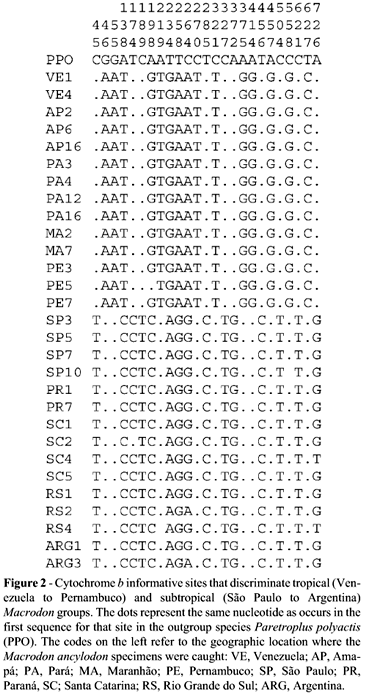The king weakfish (pescada-gó in Portuguese - Macrodon ancylodon (Sciaenidae), a demersal (bottom-feeding) species found in South America Atlantic coastal waters from the Gulf of Paria in Venezuela to Baia Blanca in Argentina, is an economically important species because of its abundance and wide acceptance by consumers. Because of its wide distribution this fish may be subject to geographic isolation and this may have resulted in distinct populations along its coastal range. Considering that this species represents an important economic resource, confirmation of whether M. ancylodon is a single species or there are different genetic stocks spread over its wide distribution would be an important contribution to conservation policies and population management of the king weakfish. To investigate differences between king weakfish populations we used the cytochrome b and 16S rRNA genes to characterize M. ancylodon specimens caught throughout its South American range from Venezuela to Argentina. Our results clearly distinguished two genetically different groups which show nucleotide divergence and genetic structuring patterns that strongly suggest they may be different species, disagreeing with the widely accepted traditional taxonomy that accepts only one species of Macrodon in the western Atlantic.
Macrodon ancylodon; Sciaenidae; Perciformes; 16S rRNA; cytochrome b; genetic differentiation










